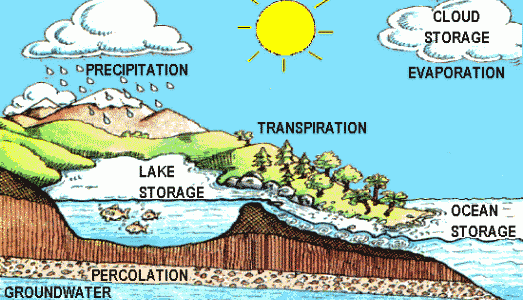I hope you all had a merry Christmas and that you are starting a happy/fulfilling new year.
I spent Christmas in France (yes I am still French, for those who cannot detect my accent any more 😉 ) and it happens that among my nieces and nephew, two are getting ready for matric next year, and one in particular is anticipating it so much that she brought her school books with her on Christmas holiday! Anyway, in between oysters and sips of white wine I noticed on the side table (as if she opened it at all) the current hard copy of her grade 11 school book: “Life and Earth Science”. I picked it up, browsed through it and (obviously) looked for climate change. I did not really know what to expect, but I was rather agreeably surprised.
In the 200-ish pages of the book with 30-ish major chapters, one dealt with climate, with a substantial section about climate change referring to a couple of scientific papers and IPCC reports, noticeably the SRES. It was brief and succinct, and of course most of us will find more to say, but it was actually rather clear and admirably accessible to a learner audience. While I imagined it would include a picture of the Earth’s surface with a cloud, rain drops and a snow cap beneath an overly bright sun (much like the feature image of this blog), there was instead a decent amount of details on the sources and reconstruction of historical climate, the making and functioning of climate models, the various SRES CO2 emission scenarios and their meaning, as well as (and this I was certainly not expecting) future projections of the climate into the century.
It made me more curious and I looked into past matric exams for any mention of climate change. And without exploring them all, I quickly found this, weighted as a third of the “Life and Earth Science” grade. (note: approximate translation)
“From geologic past to future evolution of the planet
Scientists have reconstructed historical climate variations at various time scales. In order to do so, they compared data extracted from sediments, ice sheets and satellites images. They concluded that climate is changing at the global scale.
Using the documents provided (including temperature variations over the last 420,000 years extracted from ice cores, details of the north pole sea ice extent in 1982, 2005 and 2007, global snow cover and temperature annual variations – since 1850 for temperature and 1900 for snow) and your knowledge of climate, describe the past climate at these various time scales. Discuss the ongoing climate change reality, taking into account these different time scales.”
I was impressed! Beyond the scientific process of reconstructing historical records, building on existing knowledge and all that is required to be tested for a science degree, I appreciate the strong statement regarding “the climate change reality” and “ongoing climate change”. Just as we know the human species is the result of biological evolution driven by natural selection (though some still question it), so too we know that climate change is a reality. And I’m glad this is what we teach the next generations about it.
What do grades 10-11-12 learn about climate in your country?

Anna T
Very interesting and reassuring indeed, thanks for the great blog. I hope Peter J can give us the SA version to compare – you have definitely sparked my interest to find out more and see how the curricula of different countries stack up. Would be great to hear about the US and China too – anyone?
CL
We should fire that question at our 2nd years and see what we get. Is it true that lunch in French schools is baguettes and red wine?